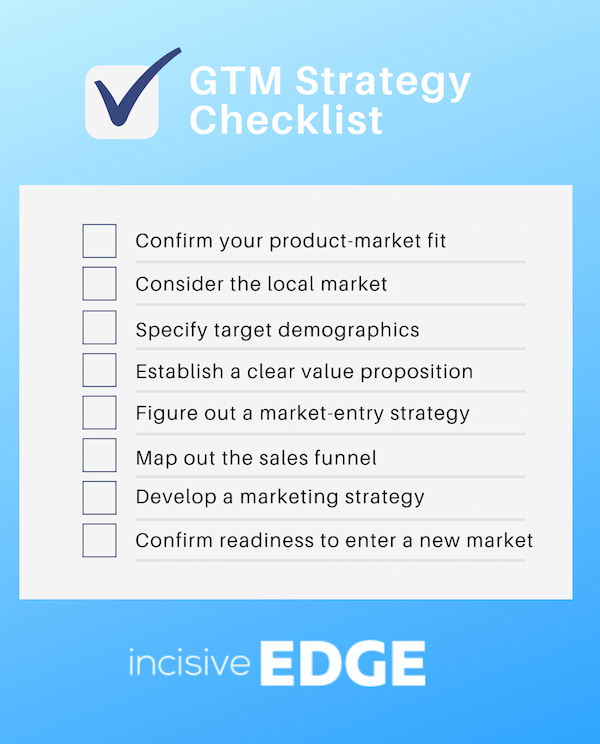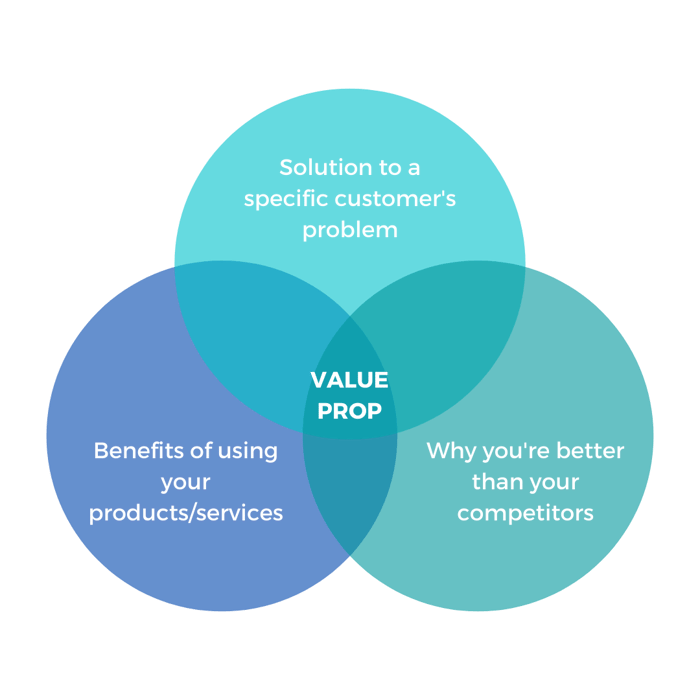A solid go to market strategy checklist can make or break your big launch.
In our previous blogs, we’ve established that entering new markets can be risky, but if you put some extra time into creating your go to market plan, you’ll find yourself enjoying a much smoother ride.
You can’t over prepare for this; you can only make sure you’re as prepared as possible.
Quick Refresher: Go to Market Strategy in a Nutshell
A go to market strategy is a detailed action plan for the distribution and delivery of a product or service to a new target market. Aimed at achieving product-market fit in a specific niche, this strategy needs to include the communication of brand values and marketing messages.
Expanding into new markets is part of running a business. It’s the only real way to increase brand awareness, boost sales, and achieve stability.
Because we understand how challenging this process can be, we’ve put together an 8-step checklist to help you craft a solid go to market plan.
Read - What is the difference between a Go to Market Strategy and a Marketing Strategy?
Your No-Fail, 8-Step Go to Market Plan
When planning your strategy, these are the main steps you’ll need to focus on:

Image: Incisive Edge
1. Confirm Your Product-Market Fit
When breaking into a new market, you need your company’s value proposition, customers, and distribution channels to align. It’s a necessary synergy, without which you might struggle to sustain any kind of success.
Spend some time analysing the potential market using a tool like Google’s Market Finder to figure out if there is enough demand for your product in the region. If it seems like you’re onto a good thing, you can study the field further.
Pay close attention to the market traffic for the previous year. If the traffic shows a downward trend, you know the market is becoming less interesting for business. If market traffic seems to be growing, you could be facing a solid option for business development and investment.
2. Consider the Local Market
After your initial assessment, you should have a better idea of how your business will perform in the local market. A vague idea won’t get you very far however, so it’s necessary to do a deeper dive.
Begin by scrutinising the local economy. You need to fully understand your potential customers before you can even consider selling to them. Remember: there’s a reason Starbucks was able to expand into almost every foreign market but failed in Australia.
Do your due diligence by assessing local laws and regulations, local politics, and any other potential barriers.
Even big name brands, like Uber, aren’t exempt from the potential negative effects of the local market. When they tried to expand into Thailand, for example, they didn’t account for the fact that local transport laws rendered their services illegal. After a short run, they had to shut down their app service throughout the country in 2018.
3. Specify Target Demographics
In addition to a solid cultural footing, you need to develop an understanding of your target market’s demographics and interests. You may be surprised at the differences you find from one region to the next.
Find out more about your audience’s age, gender, browsing habits, careers, device usage and hobbies to begin with. The more you know, the better equipped you’ll be to connect with them further down the line.
4. Establish a Clear Value Proposition
Your potential customers need to know why you’re the business they should choose above all others.
Spend some time crafting a simple, 4-point value proposition that covers the following points:
- How your product or service solves a particular problem
- The benefits your customers can expect
- The value you deliver
- How and why you’re better than your competitors

Image: Incisive Edge
5. Figure Out a Market Entry Strategy
You need to think about your distribution strategy carefully, especially considering the volatile nature of the heavily globalised world we live in.
The three main distribution strategies to consider include:
- Direct distribution, which means that your business will pass the product (or service) straight to the customer without involving a middleman.
- Indirect distribution, which means that a third party will deal with the client while you focus on development or production. Software development companies often use this approach when breaking into a new market. They develop the product, and a third party markets it.
- Hybrid distribution, which is a combination of direct and indirect distribution. Big name shoe and clothing brands, for example, sell their products through various retailers but have their own flagship stores as well.
6. Map Out the Sales Funnel
With the information you’ve gathered about your target audience, you will be able to develop an idea of what your marketing and sales funnels should look like.
To do this, you need to answer the following questions:
- How will customers find you?
- What will make them convert?
- How will once-off customers become loyal consumers?
Your main aim should be to attract new customers while motivating them to become repeat purchasers. As we all know, it’s more lucrative to retain customers than it is to acquire new ones.
7. Develop a Marketing Strategy
The smartest way to go about developing a marketing strategy is to check out what your competitors are doing. If it works for them, chances are it will work for you.
Of course, it’s a good idea to take what your competitors are doing and build a better approach. Use what works, throw out what doesn’t, and keep improving all the time.
Take a look at what types of content audiences respond to. Investigate the type of brand voice that resonates with them. See how you can be the brand they’re looking for.
8. Confirm Your Readiness to Enter a New Market
After completing every step in your go to market strategy checklist, make sure that everyone in your business is on the same page about your business’ direction.
Answer the following questions:
- Are you all aligned on the development of a new product or entry into a new market?
- Do you all believe in the company's goals?
- Do you have measurable objectives?
- Can you afford the expansion?
- Do you need to invest in new infrastructure or talent?
- Is this the best time to act or could the timing be a little better?
- Have you properly analysed the target market, its current political climate, and local/global economics?
A Go To Market Strategy is Time-Consuming But Worthwhile
It will take some time to develop a solid strategy. You’ll need to do a large amount of research and planning to avoid the egregious errors made by other brands who overestimated their readiness to break into a new market.
Use the points in this go to market strategy checklist to guide you as you expand your reach and scale your growth.









